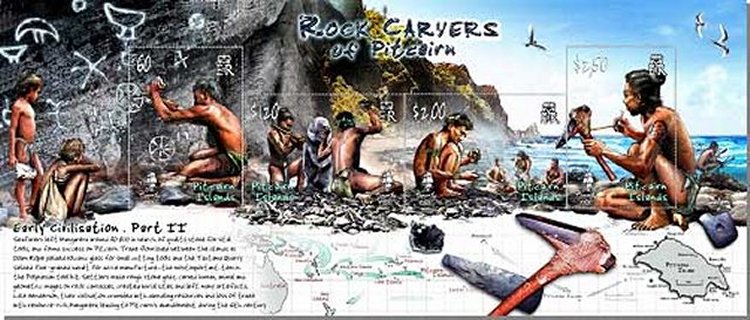Binary Code Was Used In Ancient India And Polynesia Long Before Leibnitz Invented It
A. Sutherland - AncientPages.com - In 1703, the German mathematician Gottfried Leibniz demonstrated the advantages of the binary system for computations and by doing so he laid the foundation for computing machines.
However, Leibniz was by no means the first person to discover the binary code. His invention was merely a re-invention based on ancient knowledge.
There is evidence that people in ancient India and Polynesia were familiar with the binary code thousands of years ago.
Having those discoveries in mind, scientists now question the origin of the binary system and the date of its invention.
Ancient Knowledge Of Binary Code in Polynesia
After studying the language of the tiny Pacific island of Mangareva in French Polynesia, Norwegian researchers discovered that one of two number systems traditionally used on Mangareva, had three binary steps superposed onto a decimal structure.
“Polynesian seafarers left Mangareva around AD 800 in search of quality stone for vital tools, and found success on Pitcairn. Trade flourished between the islands and settlers made rough stone gods, carved human, animal and geometric images on rock canvasses, created burial sites and left many artifacts. The Bounty mutineers arrived in 1790 and found their temple platforms, petroglyphs and stone tools giving evidence (and confirmed by Marshall Weisler), that Pitcairn had formerly supported an ancient Polynesian population, most probably from Mangareva.” Image credit: Pitcairn Islands Philatelic Bureau
The Mangarevan invention of binary steps, centuries before their formal description by Leibniz, attests to the advancements possible in numeracy even in the absence of notation and thereby highlights the role of culture for the evolution of and diversity in numerical cognition.
See also:
Was Ancient Egyptian Science Inherited From A Lost Atlantean Civilization?
Scientists discovered that the Polynesians who arrived in Mangareva over 1,000 years ago used a decimal system, as other Polynesians did. However, by A.D. 1450, the Mangarevans were using a system that combined base 10 and base 2. In the Mangarevan language, there are words for the numbers 1 through 9, as with all decimal systems.
For numbers 20 to 80 ancient Polynesians used a binary system, with separate one-word terms for 20, 40 and 80.
Ancient Music Text Reveals Knowledge Of India
There is a very interesting ancient music text written by Pingala, and important ancient scholar and author of Chhandahshastra (meaning science of meters). This ancient musical composition reveals knowledge of the binary system. The text dates to 2nd century A.D. and is with other words more than 1500 years older than Leibnitz binary system.
According to researchers, the Chhandahshastra represents the first known description of a binary numeral system in connection with the systematic enumeration of meters with fixed patterns of short and long syllables.
Use of zero is sometimes ascribed to Pingala due to his discussion of binary numbers, usually represented using 0 and 1 in modern discussion, but Pingala used light (laghu) and heavy (guru) rather than 0 and 1 to describe syllables.
As Pingala's system ranks binary patterns starting at one (four short syllables—binary "0000"—is the first pattern), the nth pattern corresponds to the binary representation of n-1 (with increasing positional values).
Bakhshali manuscript – Image credit: Bodleian Library
Pingala is credited with using binary numbers in the form of short and long syllables (the latter equal in length to two short syllables), a notation similar to Morse code.
That the binary code was invented in India is hardly a surprise. Not long ago, scientists discovered a very intriguing ancient Indian text known as the Bakhshali manuscript that re-writes the history of number zero and mathematics.
Written by – A. Sutherland - AncientPages.com Senior Staff Writer
Copyright © AncientPages.com All rights reserved. This material may not be published, broadcast, rewritten or redistributed in whole or part without the express written permission of AncientPages.com
More From Ancient Pages
-
 Roman Marble Head Found In Lake Nemi Could Be From Caligula’s Legendary Ships
Archaeology | Jun 28, 2023
Roman Marble Head Found In Lake Nemi Could Be From Caligula’s Legendary Ships
Archaeology | Jun 28, 2023 -
 Ancient Treasure Hidden In Perplexing Secret Underground Labyrinth In France – Dangerous Search – Part 1
Ancient Mysteries | Jan 16, 2020
Ancient Treasure Hidden In Perplexing Secret Underground Labyrinth In France – Dangerous Search – Part 1
Ancient Mysteries | Jan 16, 2020 -
 Evidence Foreigners Fought Alongside Ancient Greeks Is Challenging Millennia Of Military History
Featured Stories | Jun 1, 2022
Evidence Foreigners Fought Alongside Ancient Greeks Is Challenging Millennia Of Military History
Featured Stories | Jun 1, 2022 -
 Patara Lighthouse Built By Emperor Nero In 64 AD Will Shine Again
Archaeology | Mar 5, 2020
Patara Lighthouse Built By Emperor Nero In 64 AD Will Shine Again
Archaeology | Mar 5, 2020 -
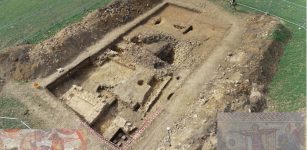 Amazing Finds At Rutland Roman Villa Reported By Archaeologists
Archaeology | Nov 29, 2022
Amazing Finds At Rutland Roman Villa Reported By Archaeologists
Archaeology | Nov 29, 2022 -
 Millennium Old Dice Found In Vadnagar, Gujarat, India
Archaeology | Apr 25, 2022
Millennium Old Dice Found In Vadnagar, Gujarat, India
Archaeology | Apr 25, 2022 -
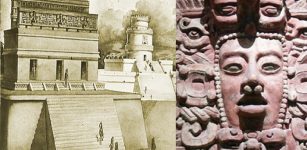 Ancient Maya Drug Containers – Scientists Identified What’s Inside
Archaeology | Jan 16, 2021
Ancient Maya Drug Containers – Scientists Identified What’s Inside
Archaeology | Jan 16, 2021 -
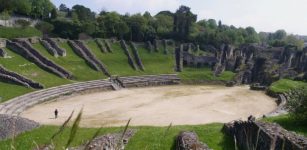 Huge Gallo-Roman Amphitheater Of Saintes Will Be Saved For Future Generations – New Project Started
News | Jan 23, 2021
Huge Gallo-Roman Amphitheater Of Saintes Will Be Saved For Future Generations – New Project Started
News | Jan 23, 2021 -
 Gungnir: Odin’s Magical Weapon That Provoked Or Reduced Conflicts In Norse Mythology
Featured Stories | May 12, 2020
Gungnir: Odin’s Magical Weapon That Provoked Or Reduced Conflicts In Norse Mythology
Featured Stories | May 12, 2020 -
 Neanderthals And Other Ancient Humans Were Much More Intimate Than Previously Thought – DNA Shows
DNA | Jul 12, 2024
Neanderthals And Other Ancient Humans Were Much More Intimate Than Previously Thought – DNA Shows
DNA | Jul 12, 2024 -
 Prehistoric Bone Tool ‘Factory’ Shows Human Ancestors Had Advanced Reasoning Skills One Million Years Earlier Than Believed
Evolution | Mar 11, 2025
Prehistoric Bone Tool ‘Factory’ Shows Human Ancestors Had Advanced Reasoning Skills One Million Years Earlier Than Believed
Evolution | Mar 11, 2025 -
 Perchta: Evil Witch Of The Alps – An Old Tradition That Still Continues
Christmas Traditions | Dec 16, 2024
Perchta: Evil Witch Of The Alps – An Old Tradition That Still Continues
Christmas Traditions | Dec 16, 2024 -
 Peculiar Bronze Mace Head Left By Unknown Ancient Culture Discovered In Poland
Archaeology | Jul 1, 2019
Peculiar Bronze Mace Head Left By Unknown Ancient Culture Discovered In Poland
Archaeology | Jul 1, 2019 -
 Sunken 18th-Century British Warship HMS Tyger Found In The Dry Tortugas National Park, Florida
Archaeology | Mar 19, 2024
Sunken 18th-Century British Warship HMS Tyger Found In The Dry Tortugas National Park, Florida
Archaeology | Mar 19, 2024 -
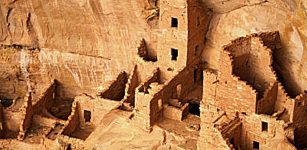 The ‘Anasazi’ Mystery: Sophisticated Civilization That Disappeared
Civilizations | Sep 20, 2015
The ‘Anasazi’ Mystery: Sophisticated Civilization That Disappeared
Civilizations | Sep 20, 2015 -
 Monumental Fortification That Protected The Kings Of Jerusalem Unearthed In The City Of David
Archaeology | Jul 23, 2024
Monumental Fortification That Protected The Kings Of Jerusalem Unearthed In The City Of David
Archaeology | Jul 23, 2024 -
 Biblical Mysteries – Foods And Drinks That Gave Extraordinary Powers, Knowledge And Immortality
Ancient Mysteries | Mar 22, 2017
Biblical Mysteries – Foods And Drinks That Gave Extraordinary Powers, Knowledge And Immortality
Ancient Mysteries | Mar 22, 2017 -
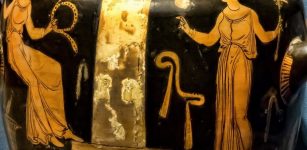 Apulian Secrets: Ancient Burial Rituals Shed Light On A Culture That Left No Written History
Archaeology | Jan 12, 2016
Apulian Secrets: Ancient Burial Rituals Shed Light On A Culture That Left No Written History
Archaeology | Jan 12, 2016 -
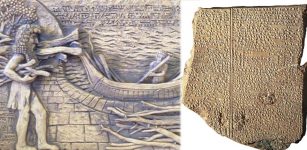 Utnapishtim And The Babylonian Flood Story
Featured Stories | Jan 28, 2016
Utnapishtim And The Babylonian Flood Story
Featured Stories | Jan 28, 2016 -
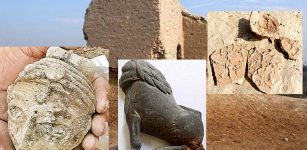 Buddhist ‘Dillu Roy’ Resembles Mohenjo Daro And Harappa And Now Unveils Its Ancient Secrets
Archaeology | Aug 25, 2020
Buddhist ‘Dillu Roy’ Resembles Mohenjo Daro And Harappa And Now Unveils Its Ancient Secrets
Archaeology | Aug 25, 2020


